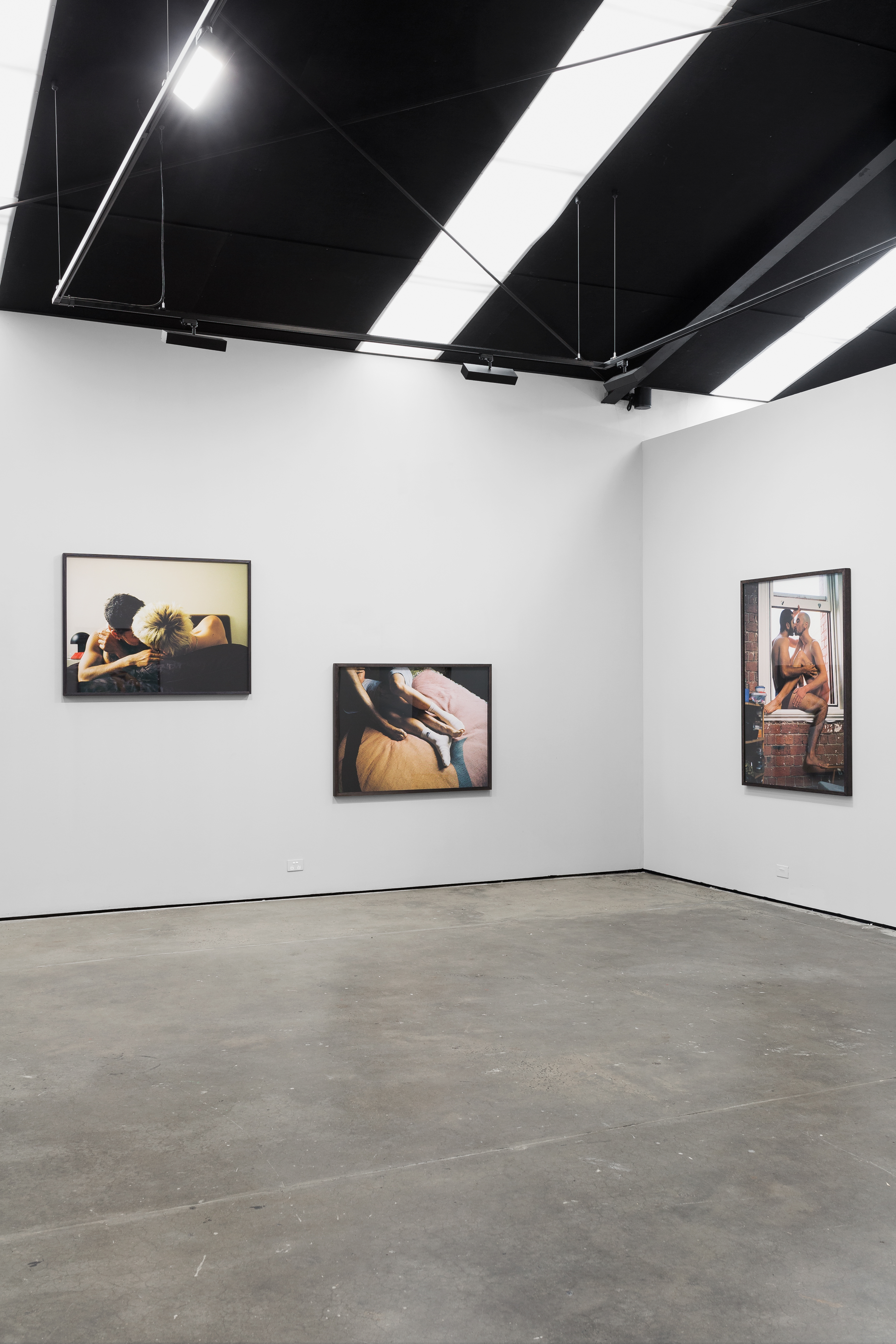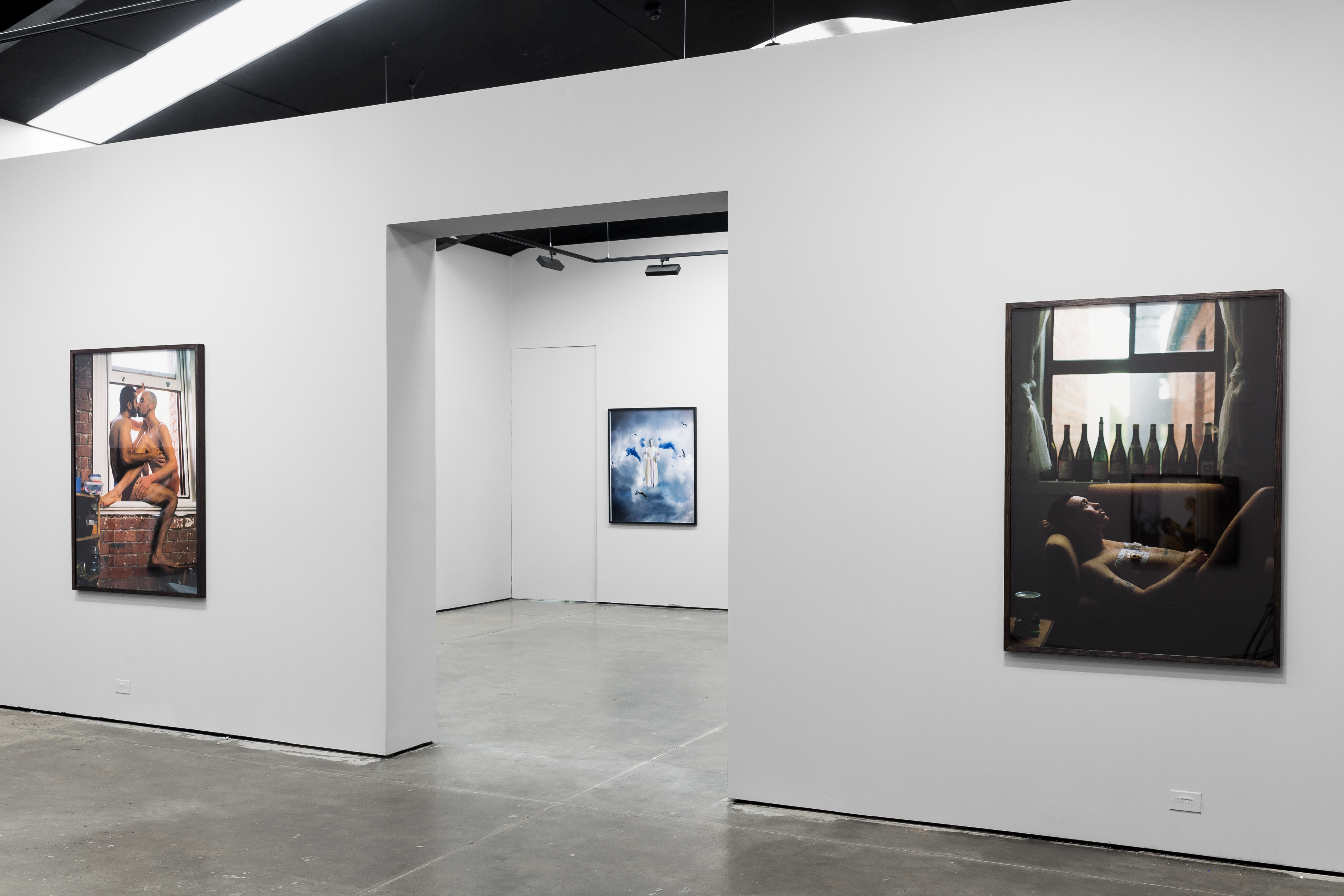2019
2020
2021
2022
2023
2024
2025
Exhibitions
Half of My Whole Life Was Just a Dream
Love Story
The Sentimentality of Something Unseen
Whānau
Remnants
The Odyssey of The Body, The Origins of Touch
Home (Away From Home)
Incase We Don’t Live Forever
Weaving A Waiata
The Future Feels Familiar Kin: A Celebration of Queer Resilience & ConnnectionMaybe Our Dreams Are Real
Tiaki (To Take Care Of)
2020
2021
2022
2023
2024
2025
Exhibitions
Half of My Whole Life Was Just a Dream
Love Story
The Sentimentality of Something Unseen
Whānau
Remnants
The Odyssey of The Body, The Origins of Touch
Home (Away From Home)
Incase We Don’t Live Forever
Weaving A Waiata
The Future Feels Familiar Kin: A Celebration of Queer Resilience & ConnnectionMaybe Our Dreams Are Real
Tiaki (To Take Care Of)
Incase We Don’t Live Forever
at James Makin Gallery for Photo 24
at James Makin Gallery for Photo 24








Essay by Laura Kirkham
When J Davies' artist statement for their 2024 exhibition, In Case We Don’t Live Forever, came across my desk I was struck by the many ways that I related to their sentiments. Chatting with J, I enthusiastically spoke of my research interests in archival history, feminist and queer theory. I found that J had captured a specific energy of queer experience from a personal, non-academic approach and they had done this, more succinctly than I’d been able to find in a single text. This is the importance of art, of J’s photography: it offers a potent exaltation of queer experience and queer futurity from lived experience. I repeat their artist statement here:
From an early age, I would loudly and proudly declare that I wouldn’t see 30. That I would die young without any particular reasoning. As a 29 year old who spends a lot of time inside my own mind, I’ve come to realise that when I was young I had no visual examples of my future, no lives I was aspiring to live, no role models I was aspiring to be like. I wasn’t exposed to any form of adult queer persons who were not demeaned and degraded for their ‘lifestyle’ choices. I wasn’t exposed to any celebrations of queer family, or trans joy.
In Case We Don't Live Forever is a photographic archive of our existence, a celebration of resilience, survival and joy. With a carpe diem/live fast die young mentality this selection of images tells the stories of our existence. It presents itself as a queer utopia, a future for us to work towards, to protect.
I asked J if I could bring in some of the texts we’d discussed in our first chat, but I’ve since been troubled by this line of approach. Wondering why it was necessary to do this, when J’s work so articulately expresses their ideas – at least to me, and to other queer people. Then it struck me that that’s the very reason why it’s important to present J’s work in the context of academia. J’s work presents a queer utopia, and that’s not just important for queer communities, but for others to bear witness to and to understand. With that in mind, this essay and the texts it draws from are something of a literature review. They explain and give precedent to J’s work and present their point of view as an important intervention in the ways we envision the future.
J describes their exhibition as a “photographic archive”. Over their life and career they have accumulated thousands of images of their friends and wider communities. What they exhibit is a curated miniature archive of this vast compendium.
In 2004, Hal Foster noted in his essay An Archival Impulse, an increasing frequency of archive-based art practices. He observed this tendency particularly in artists using or abstracting the archival format from so-called outsider subjectivities – queer archives, post-colonial archives, black archives, women’s archives etc. He explains that these archives present “a gesture of alternative knowledge or counter-memory” to the ‘traditional’ perception/contents of the archive, which have historically excluded such minority identities. Discussing these archives, he notes that their function is not to simply recuperate previously excluded histories or identities, but to have – like J’s – a utopian ambition to “turn belatedness into becomingness.” Foster develops this idea further, stating that these archives “suggest[s] a shift away from a melancholic culture that views the historical as little more than the traumatic.” That is, not to dwell so much on exclusion itself, but on the potential of alternative archives to present different visions of the future for those who have been excluded.
To think about the transformation of trauma – in particular queer trauma – I made a natural turn to Eve Sedgewick’s seminal chapter “Paranoid Reading and Reparative Reading, or, You’re So Paranoid, You Probably Think This Essay is About You” from her equally seminal text Touching Feeling (2003). Sedgewick, like Foster, thinks of trauma as a site of potential. However, unlike Foster, she does so from a position of queer theory, rather than methodological analysis. From this vantage point, she expands upon the notion of queer trauma as not just a thing of potential, but as a tool. She calls this a reparative reading, whereby subjects do not dwell on the reasons behind exclusion, discrimination et al, but on their consequences. To dwell on the why – to have a paranoid desire to diagnose history – does not change its outcome. Reparative reading is not inherently a positive position to take, it is similarly drawn from “a world of loss, pain and oppression.” Yet, “the reparative reader helps himself again and again” by resituating the subject of queer trauma from others in the past, to themselves (and their communities) in the present. She explains, “what we can best learn from such practices are, perhaps, the many ways selves and communities succeed in extracting sustenance from the objects of a culture, even of a culture whose avowed desire has often been not to sustain them.”
J’s work sits firmly within the well-established context of queer and archivally-focused artists using negative positioning as a tool. J thought that they wouldn’t live past 30. In Case We Don’t Live Forever uses that mindset as a springboard to open doors to an alternative view. Their friends, their communities are alive and present in their archive in defiance of traditional representations – or rather, non-representations – of queer lives with meaningful futures.
Sara Ahmed accurately observes that notions of happiness and a happy future follow a cultural script, and that this script has pervasively preferenced heteronormative and cis-normative models of family, marriage, and all that goes with it. That happiness and futurity “is imagined as being what follows being a certain kind of way.” J’s work is a powerful interruption of this script. A celebration of queer joy born from an absence of futurity elsewhere, J’s archives present a new script: “The futurity of happiness, how happiness offers us a promise, which we glimpse in the unfolding present.”
In Case We Don’t Live Forever is an alternative proposition for the future, one born from joy, relationships, intimacy and ecstasy in the present – for J, for their communities, and for those who don’t yet see that this future exists.
Ahmed, Sara. The Promise of Happiness. Durham and London: Duke University Press (2010).
Foster, Hal. “An Archival Impulse. October. Fall 2004: 3-22.
Sedgwick, Eve. Touching Feeling: Affect, Pedagogy, Performativity. Durham and London: Duke University Press (2003).